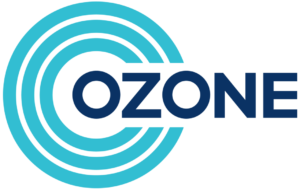By Nick Mason, CEO & Founder, Turtl
The online world is a noisy, busy place in which all of us are constantly flooded with messages, adverts, and content. And, in an attempt to counteract this, many businesses have resorted to simply “shouting louder”. This usually translates to churning out more blog posts, articles, and reports.
However, the result is a rise of “content for content’s sake”: content produced with little or no consideration for any established principles. This is often an attempt to attract and retain attention against all the noise, and to build positive brand sentiment. Or to turn all that into predictable and valuable action on the part of the reader, which can be connected back to core business objectives that drive revenue. Moreover, this content is typically produced using traditional, outdated, and expensive methods, further compounding the problem.
This is what we call “content chaos”. It’s an area where businesses see a rising sea of content and noise and seek to stay afloat by producing more, but end up only adding to the problem – often at great opportunity and monetary cost. Or, to put it another way, it can be viewed as content created to meet internal business pressures, rather than to serve the actual needs and demands of external audiences. To paraphrase Rumi, if we want better results we must learn to “raise our words, not our voice”, but what does that look like exactly, and where should we start?
Presenting content to audiences through a psychological lens
Irrelevant and out of touch content creates many challenges – big and small – but the biggest is the inability for brands to build meaningful, trusting, and value-based relationships with their consumers. Without that, you can’t expect to see anything other than low engagement, poor results, little to no ROI, and marketers are left doing more harm than good to their business objectives.
There is some good news, however, which is that there’s always more than one way to solve any problem, and content chaos is no exception. The field of neuroeconomics, which combines psychology and economics to engineer better outcomes, has many useful pointers and ideas for us to consider.
Firstly, we should consider the formats and means by which we present our content to our audiences through a psychological lens. A study by Lumen Research showed that applying leading psychological principles to interaction models, layouts, imagery and other key content elements increases attention rates by a factor of 10, and positive brand sentiment by a factor of 5. In the battle to acquire, maintain, and leverage attention, these results are hard to ignore for any business.
Other real-world cases have shown similarly impressive outcomes from applying neuroeconomics to common marketing patterns such as lead generation. At Turtl, we have found a fivefold improvement in lead-generation rates by allowing readers to personalise their content before they even began reading. This application of the IKEA Effect – the fact that we value something more highly if we have a hand in creating it – is an excellent example of how neuroeconomic thinking can challenge accepted marketing wisdoms and achieve better results.
Going further, most businesses will not be able to understand content consumption behaviours beyond simple metrics such as clicks and downloads. Companies who invest in deeper content measurement, such as getting right down to which sections and pages each individual reader spent the most time on, make huge strides forward in their ability to serve a more relevant message to their audiences. The result is better pipeline velocity and scale, and better leads for sales to pursue. As an example, the ability to see how many people watched a video and for how long, how they engaged with a chart, and at what point they left the content helped our client T. Rowe Price to build a hypothesis on trends and audience interests for future content.
Goodbye content chaos, hello content synergy
To finish on the purely economic side, bringing content production into the modern age by providing cloud-native tools for rapid creation, revision, and collaboration is routinely seen to deliver 90% cost savings versus traditional methods.
As such, there are several actions marketers can take right away to start truly engaging their readers:
- Make deliberate use of layout and images to support the visual story and help with the recollection of key information
- Break content down into bite-sized chunks, promoting better ingestion and retention of information
- Use personalisation to create salience and initial engagement
These are just a few examples of the many ways in which neuroeconomic thinking can be used by businesses to shake themselves out of a state of content chaos and replace it with more value-driven, sustainable, and cost-effective practices.









